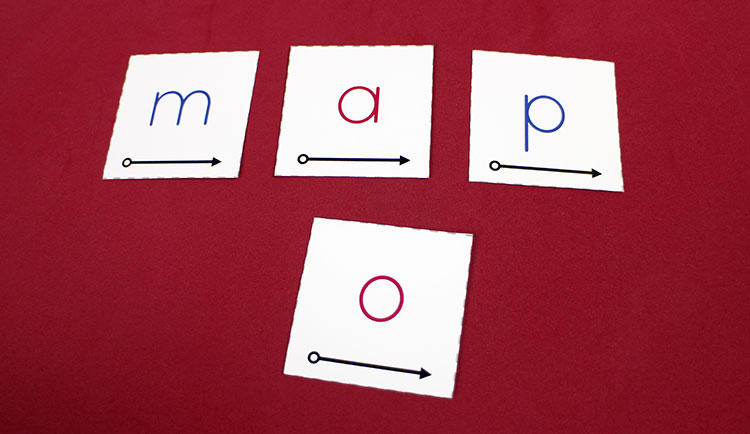L5: Middle Sound Swap
1. Overview
Produce and then read a series of three-sound words by swapping out the middle (vowel) sounds to make new words.
L5: Middle Sound Swap
2. Materials & Preparation
Print out the sound cards and the word work mat, preferably on sturdy card-stock paper, and cut apart the sound cards. For the word work mat, trim off the white edges and tape the pages together. Put the word work mat directly in front of your child. The word list is for the adult’s reference only. All the words in this activity contain short vowel sounds, so do a quick review of those sounds with your child if necessary. ↑ Top3. Activity
Video: How to play Middle Sound Swap
Have the child put the sound cards in their matching squares on the word work mat, giving the sound for each letter or digraph as he moves the card to its place.
You will guide your child through building a three-sound word on his word work mat and then swapping the middle (vowel) sound to make other words.
In the example below, we will lead a child through the words starting with b and ending with d, beginning with bad.
Adult: You can make lots of words by swapping their middle vowel sounds. Here’s how: I’ll say three sounds. You find each sound when I say it, and move the card to the boxes at the bottom of the mat. Start here. [Point to left box.] Get ready: /b/ [child moves card] … /aaa/ [child moves card] … /d/ [child moves card] Now say the sound on each card. Start here. [Point to left box.] Child: /b/ • /aaa/ • /d/. Adult: Say the sounds fast. What word? Child: /b/-/aaa/-/d/. b/a/d. Bad! Adult: Good job. Now put the /aaa/ card back in its place. Swap it for the /eee/ card. Child: [Swaps cards.] Adult: Say the sound on each card. Get ready: Child: /b/ • /eee/ • /d/. Adult: Say the sounds fast. What word? Child: /b/-/eee/-/d/. b/e/d. Bed! Adult: Yes. You swapped the middle sound to turn bad into bed. Now put the /eee/ card back and swap it for the /iii/ card.Continue until your child has made all the words in that group, then reverse the order. Go through the word group backward, from the final word bud back to bad. Have the child put all three sound cards back in their places before beginning a new word group. Go through about twenty words (four to six word groups) in a session. NOTE: We recommend that you gradually work your way through this entire word list. Medial vowel sounds are the most difficult for children to hear and swap, so they need as much practice on this as possible. ↑ Top
4. Small Groups (2-5 children)
Lesson Objective: Using visual aids, children will hear individual phonemes in a three-sound word, identify and correctly order their corresponding lower-case alphabet letter cards to build the word, read the word, and then swap the medial vowel sound card to produce and read a new word. GELDS (Georgia Early Learning & Development Standards): CLL6.4f (closest standard) Georgia Standards of Excellence: ELAGSEKRF2.e Common Core State Standards: CCSS.ELA-LITERACY.RF.K.2.E Additional Materials:- optional: pocket chart to display work mat and sound cards
Leave a Reply
